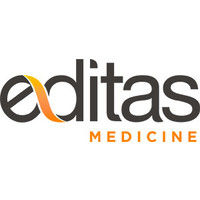预约演示
更新于:2025-05-07
HBG1
更新于:2025-05-07
基本信息
别名 Gamma-1-globin、Hb F Agamma、HBG-T2 + [5] |
简介 Gamma chains make up the fetal hemoglobin F, in combination with alpha chains. |
关联
12
项与 HBG1 相关的药物作用机制 HBG基因刺激剂 [+3] |
非在研适应症- |
最高研发阶段临床1/2期 |
首次获批国家/地区- |
首次获批日期1800-01-20 |
靶点 |
作用机制 HBG基因刺激剂 |
在研机构 |
原研机构 |
在研适应症 |
非在研适应症- |
最高研发阶段临床1期 |
首次获批国家/地区- |
首次获批日期1800-01-20 |
作用机制 HBG基因刺激剂 [+1] |
在研机构 |
原研机构 |
在研适应症 |
非在研适应症- |
最高研发阶段临床申请批准 |
首次获批国家/地区- |
首次获批日期1800-01-20 |
11
项与 HBG1 相关的临床试验NCT06155500
Long-term Follow-up (LTFU) of Patients Treated With Genome-edited Autologous Hematopoietic Stem and Progenitor Cells (HSPC)
CADPT03A12001 is a prospective, multi-center study that is designed to follow all enrolled patients who have received treatment with OTQ923 for long-term safety and efficacy.
开始日期2024-04-16 |
ChiCTR2300069244
A Safety and Efficacy Study Evaluating RM-001 in Subjects with Transfusion-Dependent ß-Thalassemia
开始日期2022-12-15 |
申办/合作机构- |
CTR20222947
评价自体CRISPR-Cas9编辑的CD34阳性细胞(RM-001细胞注射液)治疗输血依赖型β-地中海贫血症安全性和有效性的单臂、开放、单剂量、多中心的Ⅰ/Ⅱ期临床研究
评价RM-001细胞注射液治疗输血依赖型β-地中海贫血的安全性和有效性的多中心、开放的临床研究。
开始日期2022-12-15 |
申办/合作机构 |
100 项与 HBG1 相关的临床结果
登录后查看更多信息
100 项与 HBG1 相关的转化医学
登录后查看更多信息
0 项与 HBG1 相关的专利(医药)
登录后查看更多信息
653
项与 HBG1 相关的文献(医药)2025-06-01·The Pharmacogenomics Journal
Exploring pharmacogenetic factors influencing hydroxyurea response in tanzanian sickle cell disease patients: a genomic medicine approach
Article
作者: Nzunda, Collin ; Alimohamed, Mohamed Zahir ; Chamba, Clara ; Sangeda, Raphael Z ; Karim, Salman ; Mgaya, Josephine ; Ngowi, Doreen ; Yonazi, Mbonea ; Buchard, Eliud ; Saukiwa, Emmanuel ; Chimusa, Emile R ; Johansen, Julieth ; Kaywanga, Frida ; Urio, Florence ; Novelli, Enrico ; Dandara, Collet ; Solomon, David ; Makani, Julie ; Kindole, Christina ; Nkya, Siana ; Christopher, Heavenlight
2025-03-04·Hemoglobin
Molecular Characterization of Complex Thalassemia with Multiple Variants in β-Globin Gene Cluster and the Identification of a Novel Structural Rearrangement in γ-Globin Gene
Article
作者: Zhou, Jihui ; Liu, Yanqiu ; Huang, Ting ; Shao, Junhui ; Luo, Haiyan ; Fang, Yuan ; Ma, Pengpeng ; Zou, Yongyi ; Yang, Bicheng ; Xu, Yonghua ; Yang, Yan
2025-03-01·Advanced Science
Haplotype‐Resolved Genotyping and Association Analysis of 1,020 β‐Thalassemia Patients by Targeted Long‐Read Sequencing
Article
作者: Lao, Jinquan ; Xu, Xiangmin ; Huang, Zhijing ; Niu, Chao ; Zhang, Xinhua ; Qin, Lang ; Qin, Honggui ; Liu, Zhentian ; Lin, Bin ; Yu, Lian ; Li, Kui ; Huang, Li ; Huang, Binbin ; Huang, Yueyan ; Li, Yaoyun ; Li, Jiaqi ; Long, Xingjiang ; Tang, Deguo ; Hua, Xiaoyun ; Liu, Yumeng ; Chen, Juanjuan ; Qin, Jiaofeng ; Zhang, Qianqian ; Meng, Wanli ; Feng, Xiaoqin ; Zhu, Weijian ; Lin, Wanying ; Liao, Liuhua ; Zhong, Tianyu ; Chen, Weijie ; Fan, Chengwu ; Liang, Yidan ; Xie, Tiantian ; Liu, Riyang ; Ren, Zhilin ; Zhou, Xiaoman ; Qu, Xiang ; Mao, Aiping ; Liu, Qiujun ; Zhan, Jiahan ; Tan, Jufang ; Zeng, Lihong ; Yan, Lixiang ; Cai, Junqin ; Ye, Yuhua
31
项与 HBG1 相关的新闻(医药)2024-10-24
日前,Editas Medicine发布了一则战略更新,将重心再次转向体内CRISPR基因编辑。同时,寻求其目前唯一的临床管线reni-cel(之前名为EDIT-301)的对外许可或合作伙伴。
在Editas过去的研发中,其实可以看到其重心在体内或体外疗法的不断摇摆,小编研究了一下,发现还是蛮有意思的——从AAV体内-到HSPC体外-再到LNP体内。
被兜售的reni-cel
reni-cel是一款用于治疗镰状细胞病(SCD)和β-地中海贫血的CRISPR-Cas12a基因编辑药物。EDIT-301由来自患者的CD34+造血干细胞和祖细胞(HSPC)构成,这些细胞经过CRISPR-Cas12a编辑γ珠蛋白基因(HBG1和HBG2)启动子,能够持续产生的胎儿血红蛋白(HbF)。
reni-cel是Editas公司管线内唯一一款临床管线,忍痛放弃reni-cel的原因可能是过长的开发时间、潜在的市场挑战、公司资金短缺等。
根据报告,reni-cel尽管展示出积极的早期临床试验结果,所有镰状细胞贫血病(SCD)患者均未发生血管闭塞事件VOE;所有β地中海贫血患者的总血红蛋白均早期稳步升高,高于输血非依赖性阈值9g/dL。
但是距离推进上市,还需要几年的时间。
而在目前的SCD和β-地贫治疗市场上,包括美国FDA在内的几个监管机构已经批准了另一种CRISPR疗法Casgevy,另外还有蓝鸟的Lyfgenia(SCD)和Zynteglo(β-地贫)。
值得注意的是,Casgevy的开发商Vertex与Editas达成了协议,Vertex获得了CRISPR-Cas9基因编辑技术的非独家授权,用于包括Casgevy在内的SCD和β-地贫体外基因编辑药物。为此,Editas将获得来自Vertex的5000万美元预付款+外加5000万美元的或有付款和年度许可费。不过,前些时候,Editas为了提前变现,将Vertex许诺的年度许可费交易给了DRI Healthcare,换取5700万美元的现金。延伸阅读:张锋公司现金流告急,提前变现许可权益
几年后的未来,SCD和β-地贫的市场竞争可能更为激烈,reni-cel的竞争力很难讲。
以及长达数年的CRISPR产品临床开发,对于公司资金压力也更大。
Editas的总裁兼首席执行官在一份声明中表示:“我们相信,对于患者和我们股东来说,最好的选择是寻求代替方案,例如全球合作伙伴或者对外许可,这件允许我们与另一方或由另一方进一步开发或最终商业化reni-cel,并将使Editas在2025年的支出大幅度减少。”
目前,Editas公司已聘请投资银行Moelis & Company来领导寻找reni-cel的合作伙伴或收购者的工作。
不过,reni-cel的临床工作还未完全停摆。Editas报告将会对针对SCD的1/2/3期试验RUBY中和针对β-地贫的试验EdiTHAL中已经完成招募的患者给药并持续随访;预计将在2024年年末报告更多的临床数据。
自此,由Editas对CRISPR体外项目的开发告一段落,转而面向CRISPR的LNP体内项目。
新的重心
Editas推出了未来的重点——针对SCD和β-地贫的LNP体内编辑项目。
是的,在放弃已经进入到临床阶段并显示较为积极的数据的SCD和β-地贫项目reni-cel后,Editas瞄准的适应症居然还是SCD和β-地贫,可能是新的LNP体内项目的竞争优势更大吧,毕竟体内LNP是通用型疗法,成本和价格会更低。
Editas利用专有的新型靶向脂质纳米颗粒(t-LNP)开发了下一代SCD和β-地贫体内疗法,并在小鼠模型中完成了临床前概念验证。
在人源化小鼠模型(植入人类造血干细胞且缺乏自身造血细胞的小鼠)中,体内疗法实现了造血干细胞和祖细胞(HSPC)的编辑诱导胎儿血红蛋白 (HbF)产生。
通过利用造血干细胞靶向策略和t-LNP制剂优化,单次给药后,HSPC的编辑水平达到29%。进一步证明,使用t-LNP配方进行的编辑可导致HbF诱导的功能结果,表现为存在表达HbF的人红细胞(平均20%),这些经编辑的红细胞在体内生存一个月。
根据Editas报告,截止2024年第三季度,公司拥有约2.65亿美元的现金、现金等价物和有价证券,或在收到DRI的预付款后约为3.2亿美元。
体内or体外?摇摆的Editas
Editas在业内大名鼎鼎,是张锋创办的第一家公司,是第一家上市的CRISPR基因编辑公司,也是最早将CRISPR技术转化为临床药物的公司。
在Editas过去的研发中,其实可以看到其重点在体内或体外疗法的不断摇摆,从AAV体内—到HSPC体外—再到LNP体内。
被放弃的AAV体内项目
最早先,Editas更多押注在AAV体内项目上,包括其最先推进临床的眼科项目EDIT-101。
EDIT-101是首个获批临床的体内CRISPR基因编辑药物,于2018年获得美国FDA批准IND。但是后来,因为商业潜力堪忧,投入和产出成本不匹配,Editas于2022年宣布为EDIT-101寻求合作机会但无果。
延伸阅读:商业潜力堪忧,Editas领先的体内CRISPR疗法停止临床开发
2023年1月,Editas在正式宣布停止对EDIT-101内部投资的同时,又停止了一项AAV体内CRISPR项目EDIT-103。EDIT-103是一款视紫红质相关的常染色体显性视网膜色素变性 (RHO-adRP)疗法,同样临床数据还算积极。另外,被挺停止的还包括一款iNK细胞疗法EDIT-202。
转战HSPC体外项目
在放弃AAV体内之后,2023-2024年中的Editas将资源集中在HSPC体外项目reni-cel上。
经历为时一年半的努力,reni-cel也被放弃。
新目标LNP载体
在Editas于10月22日发布的向体内CRISPR的战略更新前,Editas于21日宣布与Genevant Sciences达成合作协议。
根据协议,双方将Editas的CRISPR Cas12a基因组编辑系统,及Genevant的专有脂质纳米颗粒(LNP)递送技术,共同开发针对特定领域两个未公开靶点的mRNA-CRISPR Cas12a-LNP产品。
参考资料:
1.https://ir.editasmedicine.com/news-releases/news-release-details/editas-medicine-announces-progress-towards-2024-goals-including
2.https://ir.editasmedicine.com/news-releases/news-release-details/editas-medicine-and-genevant-sciences-collaborate-develop-novel
3.https://ir.editasmedicine.com/news-releases/news-release-details/editas-medicine-announces-strategic-updates-and-portfolio
本周好文推荐
如需转载请联系佰傲谷并在醒目位置注明出处
·
·
·
·
·
·
·
·
基因疗法并购
2024-10-10
关注并星标CPHI制药在线
近日,辉瑞宣布自愿从目前已获批的市场中撤回所有批次的镰状细胞病(SCD)治疗药物Oxbryta(voxelotor),并且停止所有正在进行的临床试验和扩大该药物的准入计划。
Voxelotor是辉瑞于2022年,斥资54亿美元收购Global Blood Therapeutics(GBT)所得,这是一款针对SCD的口服药物,其通过增加血红蛋白对氧的亲和力起作用,可抑制镰状血红蛋白聚合以及由此导致的红细胞镰状化和破坏。2019年,FDA加速批准Voxelotor用于治疗成人和12岁及以上儿童的镰状细胞性贫血。
目前,Voxelotor已在全球35多个国家获批。去年,Voxelotor的全球销售额达到3.28亿美元,虽然表现不算强劲,但一直被辉瑞寄予厚望。
获益不再超过风险,voxelotor落寞退市
SCD是一种遗传性血液疾病,其病因是由于编码血红蛋白(HbS)β链的基因中出现突变而导致异常HbS的形成,在脱氧状态下,HbS常常聚合在一起,导致红细胞(RBC)变形呈现镰刀状,并失去弹性,SCD因此得名。
患有SCD的患者会出现包括贫血、免疫缺陷、多器官衰竭等多种症状。除此之外,VOC(血管阻塞危机)是SCD患者最常见的并发症之一。
VOC是由于镰刀状红细胞粘附,造成器官发生缺血性损伤并引发严重疼痛,大约有一半SCD患者经历过VOC。目前,针对VOC的疗法非常有限。
Voxelotor于2019年11月获FDA批准上市,并于2022年2月获EMA批准上市,用于治疗SCD,以减少贫血和VOC的发生频率。值得一提的是,voxelotor是FDA批准的首 款直接抑制镰状血红蛋白聚合的药物,曾被认为是SCD治疗领域一颗冉冉升起的明星。
然而在GBT440-032和GBT440-042两项注册性研究中,voxelotor的表现却不尽人意。GBT440-032试验旨在评估voxelotor对2~15岁SCD患者和中风高危儿童脑动脉血流的经颅多普勒超声测量的影响。数据显示,接受voxelotor治疗的患者比未用药时经历了更多的VOC,有8人死亡。
GBT440-042试验旨在评估voxelotor对12岁SCD患者腿部溃疡的影响。该试验的开放标签试验部分发生了 8 例死亡病例。
基于这两项临床试验数据,可以看出voxelotor在SCD患者群体中的临床获益不再超过风险,因此辉瑞决定撤市。
疗效不敌安慰剂,诺华也"难逃一劫"
在SCD治疗领域,除了voxelotor退市外,诺华的Crizanlizumab(商品名Adakveo)在上市3年后也被EMA宣布撤销上市。
Crizanlizumab是一种人源化单克隆抗体,可与P-选择素结合发挥治疗作用。P-选择素是一种在血管内皮细胞和血小板表面发现的蛋白质,主要引起细胞间相互作用,参与血栓形成或镰刀细胞病相关疼痛危象。Crizanlizumab于2019年11月获FDA批准上市,2020年10月在欧洲获批上市,是首款预防SCD所致VOC的靶向疗法。然而在2023年1月,诺华公布的Crizanlizumab预防SCD患者VOC 的III期STAND研究显示:与安慰剂相比,Crizanlizumab在两种不同剂量(5.0mg/kg,7.5mg/kg)水平下均未能降低VOC的发生率。
诺华表示,这些发现与之前的试验结果不一致,早前进行的SUSTAIN试验显示,5.0mg/kg的crizanlizumab优于安慰剂。
鉴于此,欧洲药品管理局人用药品委员会(CHMP)在2023年5月建议撤销crizanlizumab的有条件上市许可。
事实上,在crizanlizumab之前,仅有两款药物获批用于治疗SCD--Hydroxyurea(羟基脲)和Endari(L-谷氨酰胺口服粉剂),其中羟基脲因安全性问题使用受限。
谷氨酰胺口服粉剂于2017年获FDA批准用于SCD治疗,成为该领域20年来首 款获批新药。
基因治疗成为新希望
SCD药物的研发充满挑战,入局药企开始把希望寄托在具有一次性治愈潜力的基因治疗上,其中Vertex Pharmaceuticals/CRISPR Therapeutics进展较快。
2023年12月,Vertex Pharmaceuticals/CRISPR Therapeutics的基因编辑疗法Casgevy(exa-cel)获FDA批准上市,用于治疗12岁及以上患有复发性血管闭塞危象的SCD患者。这是一款自体细胞疗法,其利用CRISPR/Cas9基因编辑系统,在体外对来自患者的造血干细胞进行编辑,使血红细胞生产高水平的胎儿血红蛋白(HbF),来减少SCD患者的疼痛和VOC发生频率。Casgevy是首 款获FDA批准治疗SCD的基因疗法。
在研药物方面,Editas Medicine的在研CRISPR基因编辑疗法EDIT-301,是一种用于治疗SCD与输血依赖性β地中海贫血症(TDT)的在研细胞疗法。其由来自患者的CD34+造血干细胞和祖细胞构成,这些细胞在γ珠蛋白基因(HBG1和HBG2)启动子处被具高度特异性、效率性的工程化AsCas12a核酸酶编辑。
在针对SCD的初步临床试验中(n=4),患者1和患者2在使用EDIT-301治疗后五个月达到正常的血红蛋白水平,且两位患者在十个月和六个月的随访中都保持了正常的血红蛋白水平。同时,在这些患者中亦持续观察到大于40%的胎儿血红蛋白水平。患者3和患者4在分别三个月和两个月的随访中显示总血红蛋白和胎儿血红蛋白的增加,这些现象与前两位患者所见的相似。所有四位接受治疗的患者,从接受治疗以来都没有发生VOC事件。
基因治疗仿佛吹响了攻克SCD的冲锋号,作为全球最常见的单基因遗传病之一,SCD发病率越来越高,SCD的基因疗法,或许能带来治愈希望。
参考来源:
1.https://www.biopharmadive.com/news/pfizer-oxbryta-withdraw-pull-market-sickle-cell/728155/
2.https://ir.editasmedicine.com/news-releases/news-release-details/editas-medicine-announces-positive-initial-edit-301-safety-and
END
END
END
END
来源:CPHI制药在线
声明:本文仅代表作者观点,并不代表制药在线立场。本网站内容仅出于传递更多信息之目的。如需转载,请务必注明文章来源和作者。
投稿邮箱:Kelly.Xiao@imsinoexpo.com
▼更多制药资讯,请关注CPHI制药在线▼
点击阅读原文,进入智药研习社~
上市批准加速审批并购
2024-09-18
美国当地时间2024年9月17日,美国食品药品监督管理局(FDA)正式批准了瑞风生物针对Usher综合征的创新药物RM-101的IND申请。这一批准标志着Usher综合征全球首个基于AAV的基因编辑药物研发取得了里程碑式的突破与进展。作为瑞风生物的战略合作伙伴,派真生物对这一重大进展表示衷心祝贺!
视网膜色素变性是一组遗传性眼科疾病,主要特征为视网膜光感受器细胞的进行性退化,导致视力逐渐丧失。Usher综合征是与视网膜色素变性有关的最常见综合征。Usher综合征主要分为三种类型,其中II型最为普遍,约占所有Usher病例的70%,其最常见致病基因为USH2A。USH2A基因突变导致视网膜色素变性,患者通常在青少年时期逐渐出现夜盲和周边视野缺失,最终可能导致全盲。
截至目前,Usher综合征暂无获批的药物以及有效的治疗方法,不仅极大地影响患者的身心健康和生活质量,还对家庭和社会造成显著负担,因此是巨大的未被满足的临床需求。基因编辑技术的发展,有望逆转这一局面,为患者带来新希望。瑞风生物的创新基因编辑药物RM-101,通过基因调控的技术路线,诱导患者的视网膜中的细胞产生正常功能性蛋白,有望实现一次性给药并长期有效。
基因编辑技术是划时代的生命科学工具,也是医药领域的平台型底层技术,为疾病治疗带来全新的范式。在积极创新、深耕基因编辑领域的基础上,瑞风生物希望凭借着自身掌握的创新技术和药物开发平台,为现阶段无法治愈的疾病带来突破性疗法,给深受疾病困扰的患者和家庭带来福音。此次RM-101的成功获批,标志着瑞风生物在眼科疾病领域的基因编辑创新药物布局迈入了临床阶段,为未来的临床试验和治疗应用奠定了坚实的基础。派真生物很荣幸能够助推瑞风生物的AAV基因治疗药物进展,为项目提供高质量的CMC服务!未来,派真生物也将在基因治疗领域继续深耕,为药物创新提供一站式CMC解决方案,助力更多优质项目推进。
关于RM-101
RM-101是瑞风生物开发的针对Usher综合征USH2A基因相关视网膜色素变性的创新药物产品。RM-101是基于AAV的基因编辑类药物,能特异靶向USH2A RNA,调控可变剪接生物学过程,诱导功能正常蛋白的表达恢复。RM-101通过视网膜下注射给药,有望实现一次性给药并长期有效。
关于瑞风生物
瑞风生物是中国头部的基因编辑药物创新企业,以基因编辑技术为核心驱动,致力于革新性药物的诞生。瑞风生物是国际上早期应用基因编辑探索遗传疾病治疗的高水平团队,并持续在血液科、眼科等疾病方向积累了开创性成果,在包括基因编辑工具创新、成药策略发现、新型动物模型构建、多层次药效和安全性评估等层面具备了高水平的技术积累,拥有体内和体外两大创新药物方向。瑞风生物的使命是基于革新性的基因技术,为严重疾病患者提供可及性和治愈性药物。目前在遗传病、复杂疾病和肿瘤领域等皆有管线布局,其中β-地贫创新药已经取得全球先进水平的临床进展,α-地贫方面则实现了全球首例患者治愈的突破,Usher综合征的IND申请获得FDA批准。
关于派真生物
临床申请基因疗法
分析
对领域进行一次全面的分析。
登录
或

生物医药百科问答
全新生物医药AI Agent 覆盖科研全链路,让突破性发现快人一步
立即开始免费试用!
智慧芽新药情报库是智慧芽专为生命科学人士构建的基于AI的创新药情报平台,助您全方位提升您的研发与决策效率。
立即开始数据试用!
智慧芽新药库数据也通过智慧芽数据服务平台,以API或者数据包形式对外开放,助您更加充分利用智慧芽新药情报信息。
生物序列数据库
生物药研发创新
免费使用
化学结构数据库
小分子化药研发创新
免费使用


